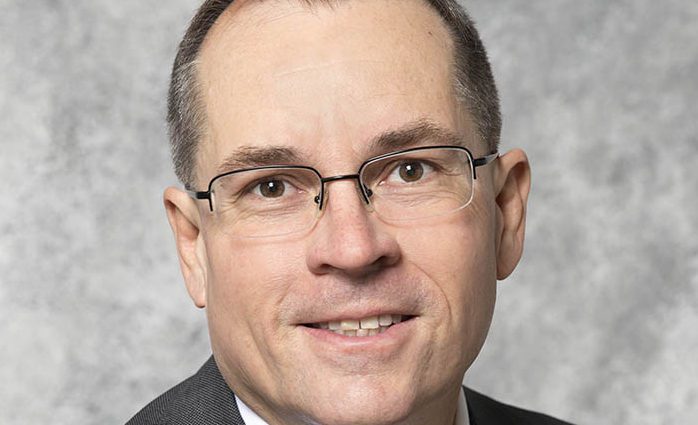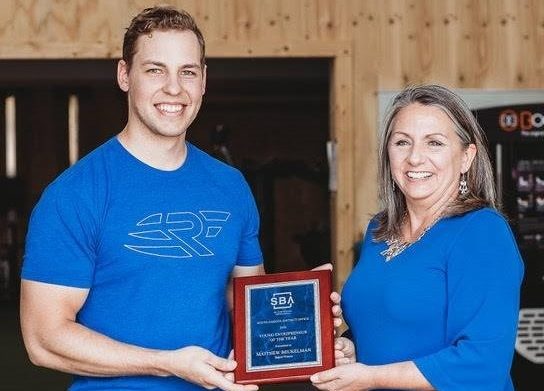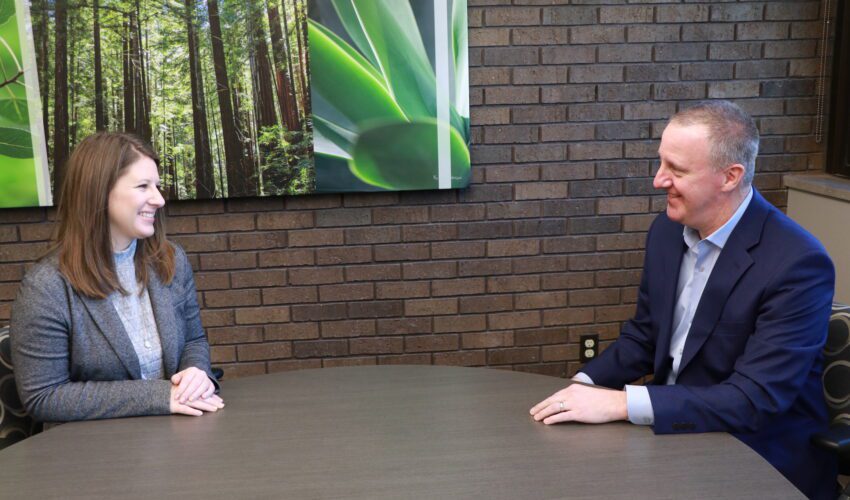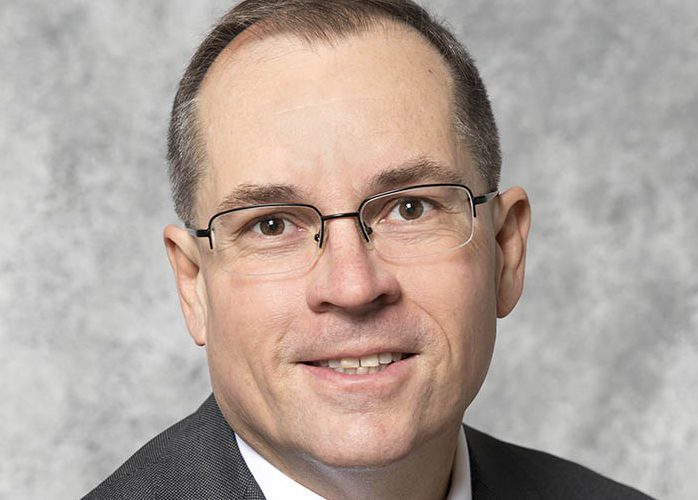Biotech, SDSU leader says ‘sky’s the limit’ for industry
This piece is brought to you by South Dakota Biotech.
He’s a leader in biotechnology, academia and research for South Dakota who says there are exciting days ahead for biotech in the state. Kevin Kephart recently retired as vice president for research and economic development at SDSU, and he serves as board vice president of South Dakota Biotech.
We asked Kephart to reflect on how far the industry has come in the state and look ahead at future growth prospects.
Looking back on your 30-year career, what are some of the things of which you are most proud?
Broadly, I’m proud and grateful to have had a career at a land-grant institution. The land-grants were established in 1862 to create opportunities for ordinary citizens. So I’m most proud of my engagement with students, farmers and companies throughout my career. I learned a lot from them, and I believe I contributed to their lives and livelihoods. I’m proud to have been a part of the many transitions that have occurred in South Dakota during the last 30 years, such as the adoption of biotechnology, the heightened attention to research and innovations, renewable energy and partnerships between universities and industry.
More specifically, I’m especially proud to have helped begin the Sun Grant Initiative, and I’m grateful and in awe of all the assistance that was garnered along the way. Countless people across the nation pitched in to making the SGI a reality and, in turn, the SGI built research and educational capacity at many institutions.
I’m also proud and grateful for my involvement in the state’s wheat industry. Wheat research is one of our areas of excellence at SDSU, and I expect that will last into the future. Wheat is consistently among the world’s most important grains used directly for human food and demand for it will increase. Wheat research entails breeding, genetics, biotechnology, plant nutrition, agronomy, plant pathology, entomology, economics, engineering, and SDSU has it all. Finally, I am pleased to have served as the dean of the graduate school during SDSU’s largest growth of PhD program offerings. (Then) Governor (Mike) Rounds and the Board of Regents kindled the push for new PhD programs and resulted in our growth of total research.
In your 11 years as vice president for research at SDSU, research activity grew from $30 million in 2004 to $58 million in 2015, peaking at $70 million in 2011. That’s an impressive record! What do you credit for that kind of growth?
The expansion of new and existing PhD program was a major driver for growth in research. More than PhD programs, I credit the many great people that have gathered at SDSU during the past 11 years. The growth that occurred at SDSU cannot be attributed to any specific individual. Such growth results from having excellent faculty with a strong work ethic and a personal commitment to conduct impactful research. My primary role, along with my colleagues in administration, has been to support and facilitate the faculty and the stakeholders. I have been fortunate to have served with two great presidents at SDSU, Peggy Miller and David Chicoine. Both of them were very supportive of their team, and they were great leaders. Finally, I think I’ve been most successful in recognizing opportunities and fruitful partnerships. I then followed up with personal engagement to make sure the work was executed and completed.
I also credit many people external to the university that wish to see SDSU fulfill its mission. Throughout the years, our congressional delegation has been steadfast in supporting SDSU, as have many legislators from throughout the state. The Board of Regents and their staff have been consistently helpful as well.
The short answer is that we have enjoyed a wonderful team over the years. I believe the university is positioned for greater success in the coming years.
You’ve also been a key leader in the biotech industry, serving on the board of South Dakota Biotech for many years and helping bring industry players together in our state. How would you say this industry has evolved here over the past decade?
The growth of biotechnology industries in South Dakota has been phenomenal. I remember when Roundup Ready soybeans were first commercialized in 1996 and were soon followed by Roundup Ready and Bt corn hybrids. For several years afterward, South Dakota led the world in adoption of the new agricultural technologies. In 2001, SDSU was the first university to commercialize a public Roundup Ready soybean variety. This was an entirely new type of venture for us that entailed significant work with Monsanto as well as in-state stakeholders. Many stakeholders favored and some opposed the new business relationship. This work was important for South Dakota producers, especially when recognizing that biotech crops still dominate our production systems 20 years later. This work also provided the seminal experience we needed to expand our relationships with industry. In 2001, less than 1 percent of our research expenditures were from industry sponsorship. In 2015, the proportion was 10 percent of a much larger amount.
There’s more to biotech than only agriculture, however. Biomedical and industrial biotechnology have also driven economic development in South Dakota. In the biomedical sector, Sanford Health and Avera have substantial R&D capacity committed to personalized medicine and have teamed up occasionally with SDSU. There’s an impressive economic ecosystem that’s growing strength in Brookings in veterinary medicine. Some of the entities include RTI, the SDSU department of veterinary and biomedical sciences and a new startup company, MedGene. For industrial biotechnology, Poet has implemented impressive technologies for ethanol production that have dramatically reduced process energy costs. Also Poet’s partnership with DSM is recognized globally for their innovative approach to cellulosic ethanol production. Finally, I am especially proud of a startup company in Brookings, Prairie AquaTech, that has developed a process to upgrade soybean meal that will replace ocean-based fish meal.
These are exciting examples of biotech at work today in South Dakota, and all of these create opportunities for our communities.
As you look ahead to biotech’s prospects in our state, what excites you the most? Where do you see the most potential?
Agriculture will continue to be a leading industry sector in South Dakota, and I look forward to continued development of agricultural biotechnologies. New tools, such as CRISPR-Cas9 gene editing, high throughput phenotyping and doubled haploids will advance crop variety development and will be applied in the livestock and veterinary medicine sectors. Finally, we need to keep an eye on SAB Biotherapeutics Inc., based in Sioux Falls. Their work interfaces biomedical technologies with agriculture and stands to be an innovative example for us to learn from.
Any thoughts on what you see yourself doing next? Might we continue to see you involved in the biotech industry?
The sky is the limit. I am excited about the opportunities in biotechnology, and I still have several years yet that I want to work. Currently, I’m pursing opportunities in renewable energy. I’ll continue to be involved in a new initiative called the Protein Highway. This bilateral initiative involves participants in the U.S. northern Great Plains and Canada to identify and respond to global markets for plant-based protein.
There has been a lot of discussion in recent years about the ever-growing global human population. With each passing day, there is added pressure placed on agricultural production systems, energy systems, natural resources, health care networks and human resources. The future presents many daunting challenges, but it’s also arrayed with a plethora of opportunities. Many of the same discussions about food security and sustainability took place a century ago. I am inspired by the vision of SDSU student Edgar McFadden who conducted a plant-breeding experiment 100 years ago in his backyard and in doing so made discoveries that later helped win WWII, secure global peace in the decades afterward, brought economic prosperity and heralded the Green Revolution. I’ll continue to study his life and pass his lessons along to future generations.
To learn more about the state’s biotech growth and resources, visit sdbio.org.








